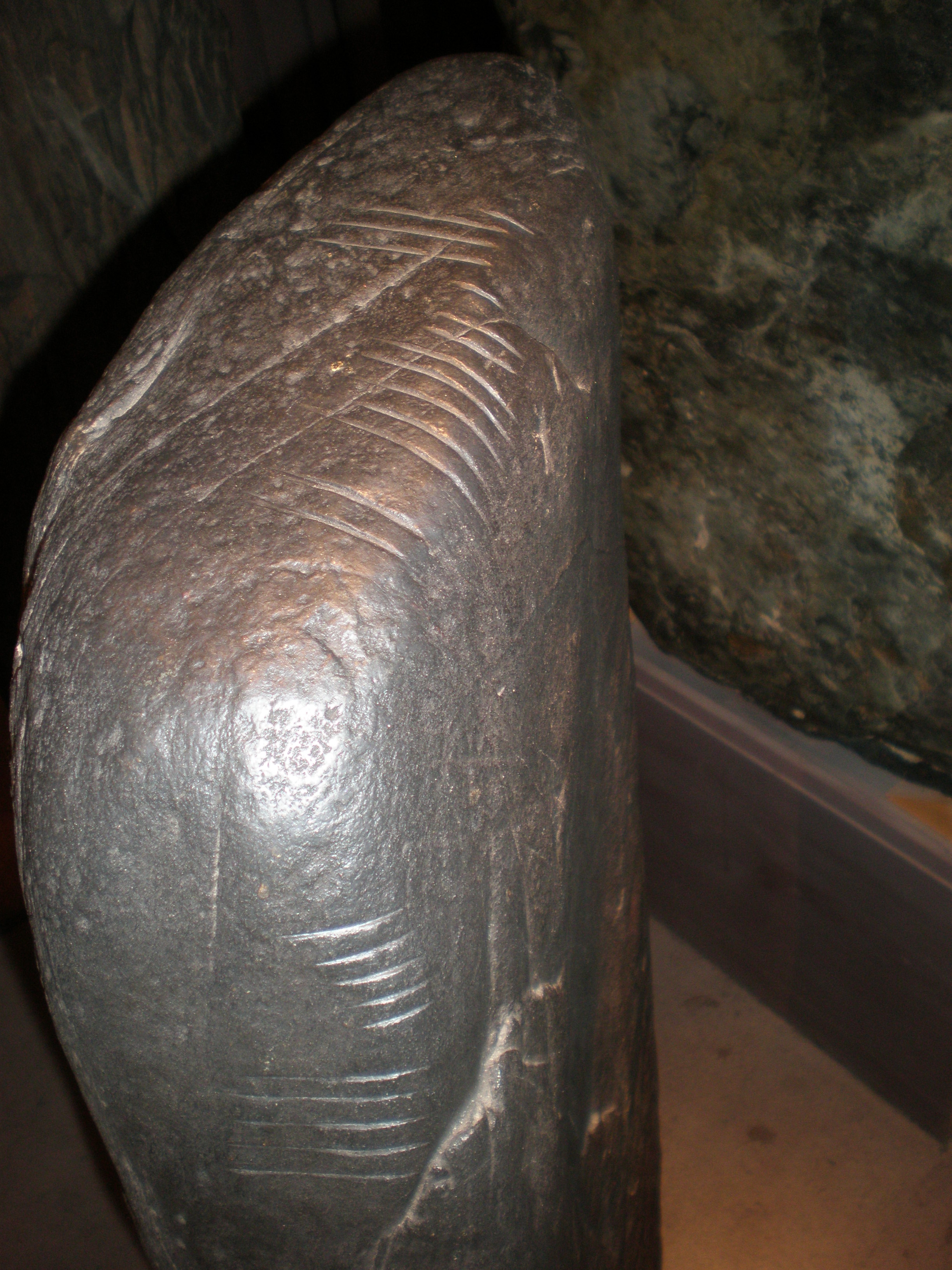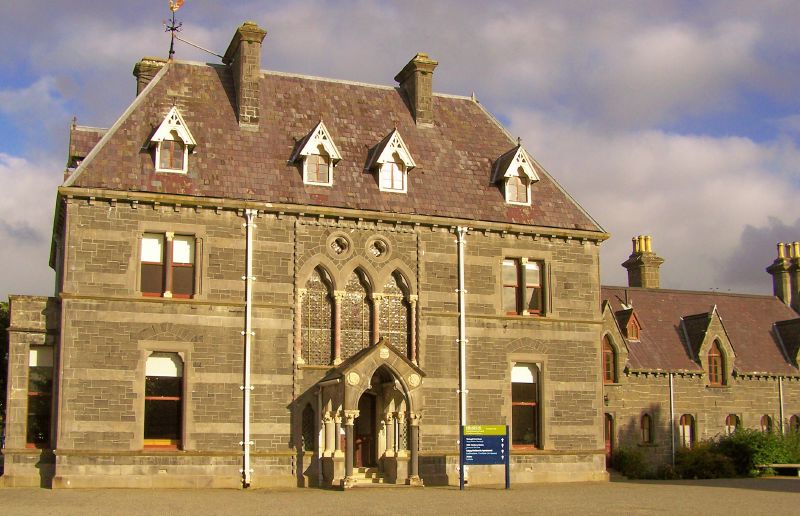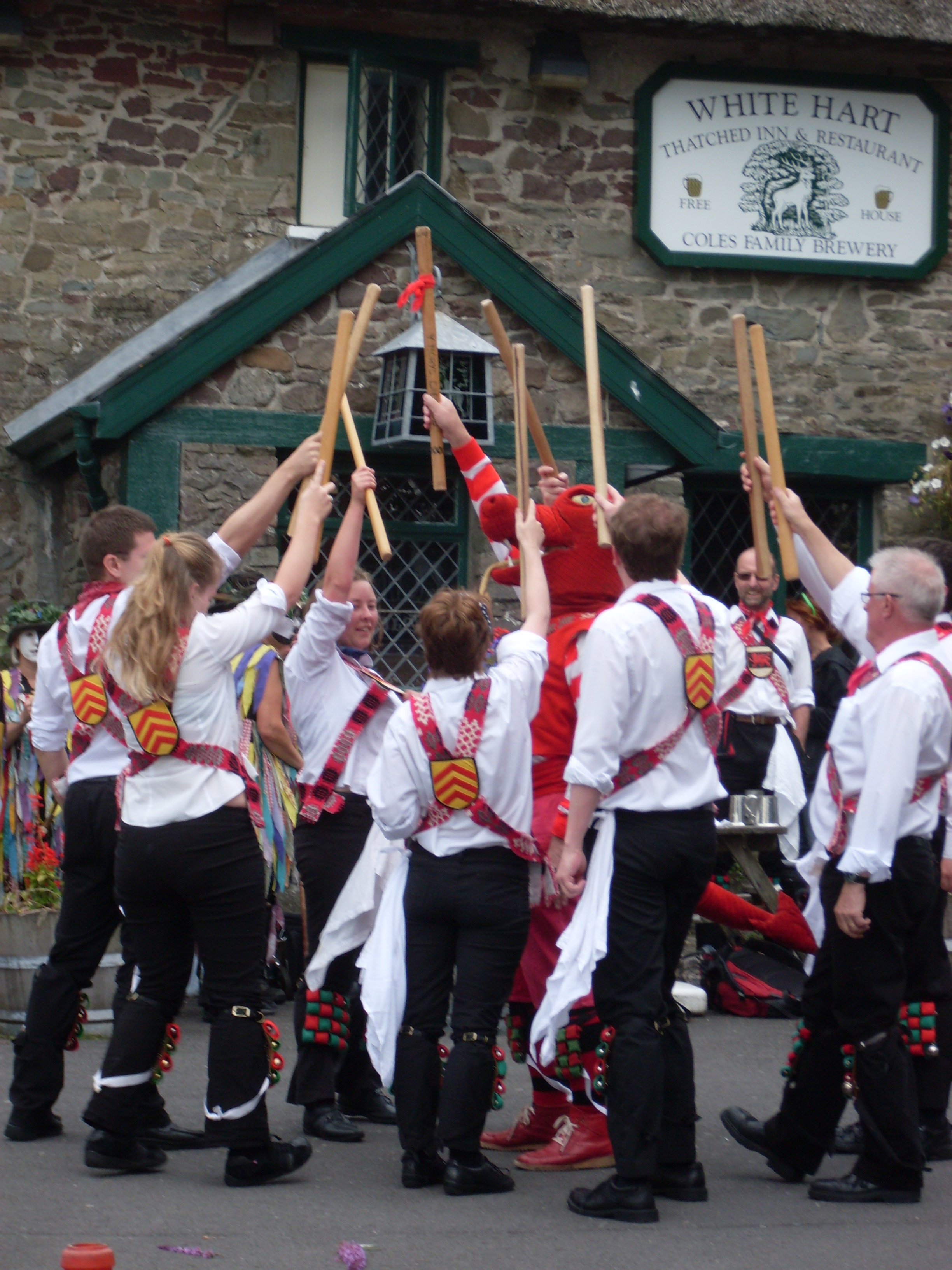|
Láir Bhán
is a hobby horse that was part of a folk custom found in parts of Ireland, particularly in the area of County Kerry, in the eighteenth and nineteenth centuries. The Irish term "" translates as "White Mare". This meaning is identical, and the pronunciation similar, to the Manx hobby horse custom known as the ''Laare Vane''. It also has similarities to the Welsh ''Mari Lwyd'', a hobby horse found in southern Wales, which has been translated as "Grey Mare". Most records of the tradition come from County Kerry. There are various reported instances in which the accompanied the Wren Boys during their Christmastime activities. An example of a is in the collection of the National Museum of Ireland. Although the origins of the hooded animal traditions in the British Isles are not known with any certainty, the lack of any late medieval references to such practices may indicate that they emerged from the documented elite fashion for hobby horses in the sixteenth and seventeenth centuri ... [...More Info...] [...Related Items...] OR: [Wikipedia] [Google] [Baidu] |
Hobby Horse
In folklore, a hobby horse is a costumed character that features in some traditional seasonal customs, processions and similar observances around the world. In England, they are particularly associated with May Day celebrations, mummers' plays and the Morris dance. Etymology The word ''hobby'' is glossed by the OED as "a small or middle-sized horse; an ambling or pacing horse; a pony". The word is attested in English from the 14th century, as Middle English ''hobyn''. Old French had or , whence Modern French and Italian . But the Old French term is apparently adopted from English rather than vice versa. OED connects it to "the by-name ''Hobin'', ''Hobby''", a variant of ''Robin''" (compare the abbreviation ''Hob'' for ''Robert''). This appears to have been a name customarily given to a cart-horse, as attested by White Kennett in his ''Parochial Antiquities'' (1695), who stated that "Our ploughmen to some one of their cart-horses generally give the name of Hobin, the very word ... [...More Info...] [...Related Items...] OR: [Wikipedia] [Google] [Baidu] |
Tradition
A tradition is a system of beliefs or behaviors (folk custom) passed down within a group of people or society with symbolic meaning or special significance with origins in the past. A component of cultural expressions and folklore, common examples include holidays or impractical but socially meaningful clothes (like lawyers' wigs or military officers' spurs), but the idea has also been applied to social norms and behaviors such as greetings, etc. Traditions can persist and evolve for thousands of years— the word ''tradition'' itself derives from the Latin word ''tradere'' literally meaning to transmit, to hand over, to give for safekeeping. While it is reportedly assumed that traditions have an ancient history, many traditions have been invented on purpose, whether it be political or cultural, over short periods of time. Various academic disciplines also use the word in a variety of ways. The phrase "according to tradition" or "by tradition" usually means that what ... [...More Info...] [...Related Items...] OR: [Wikipedia] [Google] [Baidu] |
County Kerry
County Kerry () is a Counties of Ireland, county on the southwest coast of Republic of Ireland, Ireland, within the Provinces of Ireland, province of Munster and the Southern Region, Ireland, Southern Region. It is bordered by two other counties; County Limerick, Limerick to the east, and County Cork, Cork to the south and east. It is separated from County Clare, Clare to the north by the Shannon Estuary. With an area of and a population of 156,458 as of 2022, it is the List of Irish counties by area, 5th largest of Ireland's 32 counties by land area, and the List of Irish counties by population, 15th most populous. The governing Local government in the Republic of Ireland, local authority is Kerry County Council. Bounded by the Atlantic Ocean, Kerry is Ireland's most westerly county. Its List of Irish counties by coastline, rugged coastline stretches for and is characterised by bays, sea cliffs, beaches and many small offshore islands, of which the Blaskets and the Skelligs a ... [...More Info...] [...Related Items...] OR: [Wikipedia] [Google] [Baidu] |
Manx Language
Manx ( or , or ), also known as Manx Gaelic, is a Goidelic language, Gaelic language of the insular Celtic branch of the Celtic language family, itself a branch of the Indo-European language family. Manx is the heritage language of the Manx people. Although few children native to the Isle of Man speak Manx as a first language, there has been a steady increase in the number of speakers since the death of Ned Maddrell in 1974. He was considered to be the last speaker to grow up in a Manx-speaking community environment. Despite this, the language has never fallen completely out of use, with a minority having some knowledge of it as a heritage language, and it is still an important part of the island's Culture of the Isle of Man, culture and cultural heritage. Manx is often cited as a good example of language revitalization efforts; in 2015, around 1,800 people had varying levels of second-language conversational ability. Since the late 20th century, Manx has become more visible ... [...More Info...] [...Related Items...] OR: [Wikipedia] [Google] [Baidu] |
Welsh Language
Welsh ( or ) is a Celtic languages, Celtic language of the Brittonic languages, Brittonic subgroup that is native to the Welsh people. Welsh is spoken natively in Wales by about 18% of the population, by some in England, and in (the Welsh colony in Chubut Province, Argentina). It is spoken by smaller numbers of people in Canada and the United States descended from Welsh immigrants, within their households (especially in Nova Scotia). Historically, it has also been known in English as "British", "Cambrian", "Cambric" and "Cymric". The Welsh Language (Wales) Measure 2011 gave the Welsh language official status in Wales. Welsh and English are ''de jure'' official languages of the Senedd (the Welsh parliament), with Welsh being the only ''de jure'' official language in any part of the United Kingdom, with English being merely ''de facto'' official. According to the 2021 United Kingdom census, 2021 census, the Welsh-speaking population of Wales aged three or older was 538,300 ( ... [...More Info...] [...Related Items...] OR: [Wikipedia] [Google] [Baidu] |
Mari Lwyd
The Mari Lwyd (, ) is a wassailing tradition, folk custom in South Wales. The tradition entails the use of an eponymous hobby horse which is made from a horse's skull mounted on a pole and carried by an individual hidden under a sheet. The custom was first recorded in 1800, with subsequent accounts of it being produced into the early twentieth century. According to these, the Mari Lwyd was a tradition performed at Christmas time by groups of men who would accompany the horse on its travels around the local area, and although the makeup of such groups varied, they typically included an individual to carry the horse, a leader, and individuals dressed as stock characters such as Punch and Judy. The men would carry the Mari Lwyd to local houses, where they would request entry through song. The householders would be expected to deny them entry, again through song, and the two sides would continue their responses to one another in this manner. If the householders eventually relented, th ... [...More Info...] [...Related Items...] OR: [Wikipedia] [Google] [Baidu] |
Wren Boys
Wren Day (), or Hunt the Wren Day (), is an Irish and Manx custom on 26 December, Saint Stephen's Day (known in most of Ulster as Boxing Day). Traditionally, men and boys hunted a wren, which was revered as the 'king of the birds'. They displayed it on top of a staff decorated with holly, ivy and ribbons, or in a decorated box on top of a pole. This was paraded around the neighbourhood by a group of 'Wrenboys'—typically dressed in straw masks, greenery and colourful motley clothing—who sang songs and played music in exchange for donations. This was meant to ensure prosperity for the coming year. Afterwards, the wren was buried. On the Isle of Man, they held a funeral for the wren and danced around a 'wren pole'. There were similar New Year traditions in parts of western Britain and France until the nineteenth century. There are several folk tales about the origin of the wren hunt. It is speculated that the tradition derives from ancient Celtic paganism and was originally a ... [...More Info...] [...Related Items...] OR: [Wikipedia] [Google] [Baidu] |
National Museum Of Ireland
The National Museum of Ireland () is Ireland's leading museum institution, with a strong emphasis on national and some international archaeology, Irish history, Irish art, culture, and natural history. It has three branches in Dublin, the archaeology and natural history museums adjacent on Kildare Street and Merrion Square, and a newer Decorative Arts and History branch at the former Collins Barracks, and the Country Life museum in County Mayo. History Predecessors The National Museum of Ireland descends from the amalgamation of parts of the collections of a number of Dublin cultural institutions from the 18th and 19th centuries, including primarily the Royal Dublin Society (RDS) and the Royal Irish Academy (RIA). The earliest parts of the collections are largely geological and mineralogical specimens, which the RDS collected as a means to improve the knowledge and use of such resources in Ireland. The establishment of the museum collections is generally deemed to have ... [...More Info...] [...Related Items...] OR: [Wikipedia] [Google] [Baidu] |
Morris Dance
Morris dancing is a form of English folklore, English folk dance. It is based on rhythmic stepping and the execution of choreographed figures by a group of dancers in costume, usually wearing bell pads on their shins, their shoes or both. A band or single musician, also costumed, will accompany them. Sticks, swords, handkerchiefs, and a variety of other implements may be wielded by the dancers. Morris dancing first appeared in England in the Middle Ages, England in the 15th century. Its earliest surviving mention dates to 1448 and records the payment of seven shillings to Morris dancers by the Goldsmiths' Company in London. The term ''Morris'' derives from the Spanish language, Spanish term , although Morris dancing has no known historical connection to the Moors. Three prominent groups organise and support Morris in England: Morris Ring, Morris Federation and Open Morris; all three organisations have members from other countries as well. There are around 150 Morris sides (or ... [...More Info...] [...Related Items...] OR: [Wikipedia] [Google] [Baidu] |
Irish Folklore
Irish folklore () refers to the folktales, balladry, music, dance and mythology of Ireland. It is the study and appreciation of how people lived. The folklore of Ireland includes banshees, fairies, leprechauns and other mythological creatures, and was typically shared orally by people gathering around, sharing stories. Many tales and legends were passed from generation to generation, so were the dances and song in the observing of important occasions such as weddings, wakes, birthdays and holidays or, handcraft traditions. Definition What constitutes Irish folklore may be rather fuzzy to those unfamiliar with Irish literature. Diarmuid Ó Giolláin, for one, declared that folklore was elusive to define clearly. Bo Almqvist (c. 1977) gave an all-encompassing definition that folklore covered "the totality of folk culture, spiritual and material", and included anything mentioned in Seán Ó Súilleabháin's ''A Handbook of Irish Folklore'' (1942). It was not until 1846 that th ... [...More Info...] [...Related Items...] OR: [Wikipedia] [Google] [Baidu] |
Folk Plays
Folk plays such as Hoodening, Guising, Mummers Play and Soul Caking are generally verse sketches performed in countryside pubs in European countries, private houses or the open air, at set times of the year such as the Winter or Summer solstices or Christmas and New Year. Many have long traditions, although they are frequently updated to retain their relevance for contemporary audiences. With the rise in folklore studies as an academic discipline, research into folk plays has increased. Notable organizations in this area (in the UK in particular, often centred on Yorkshire) have included: * Centre for English Cultural Tradition and Language (CECTAL), founded in 1975 based on prior research programmes, inside the University of Sheffield's Department of English * Institute of Dialect and Folklife Studies (IDAFS, part of Leeds University, closed in 1984) * National Centre for English Cultural Tradition (NATCECT, new name for CECTAL since 1997; run by Joan C. Beal and Professor J ... [...More Info...] [...Related Items...] OR: [Wikipedia] [Google] [Baidu] |










